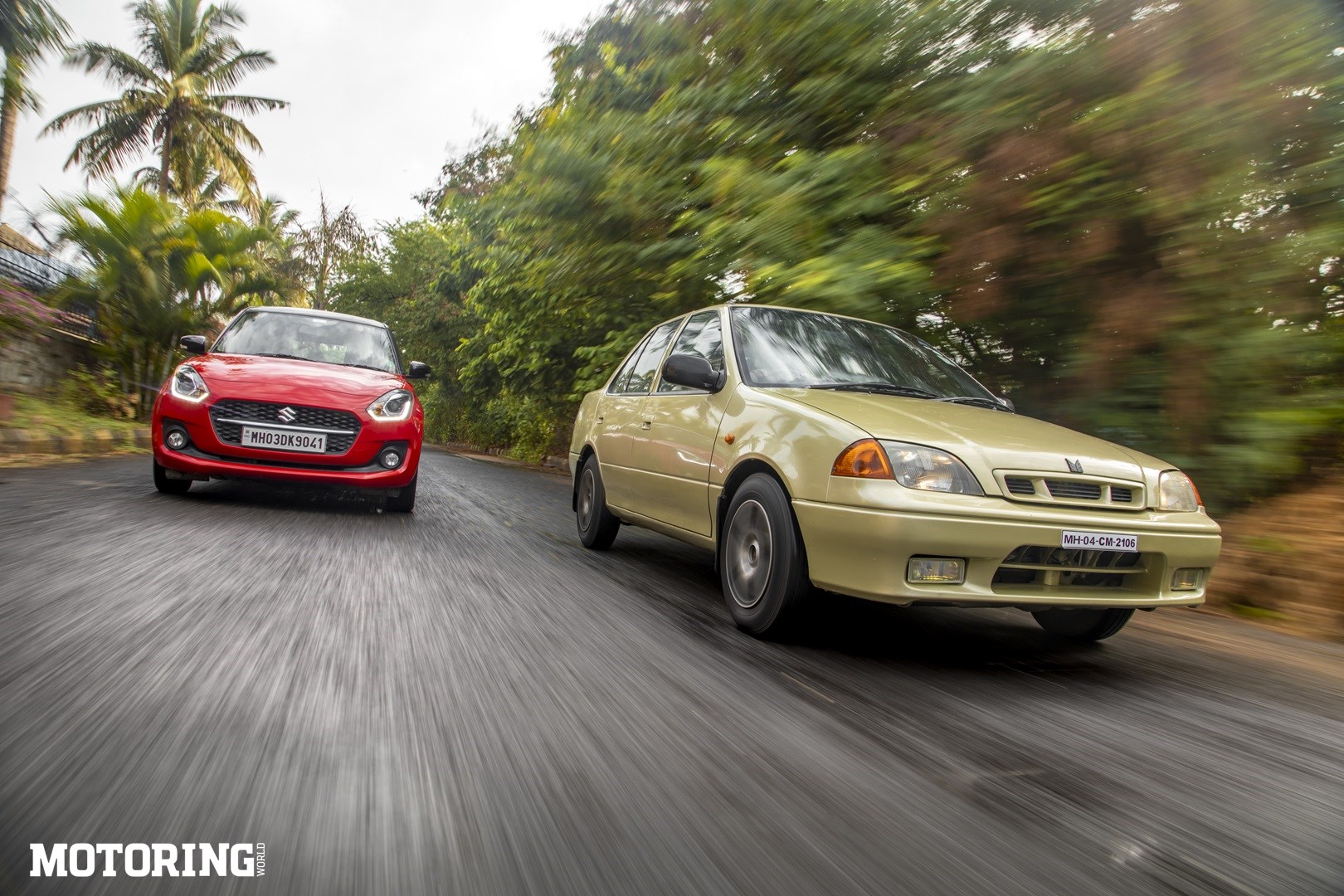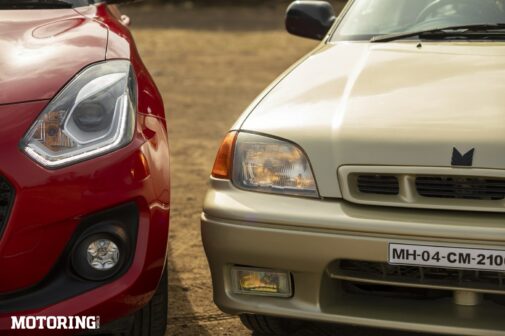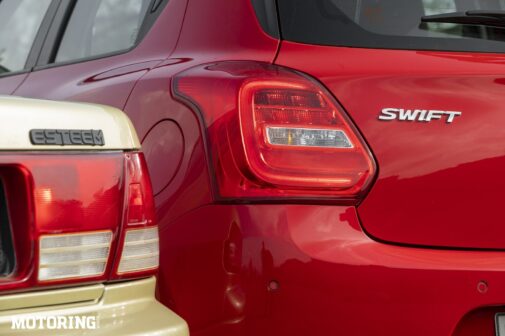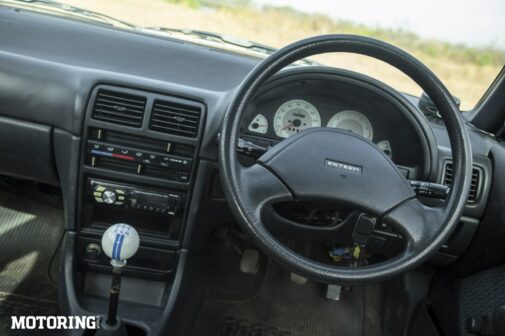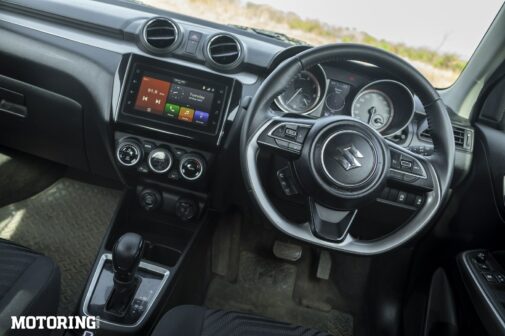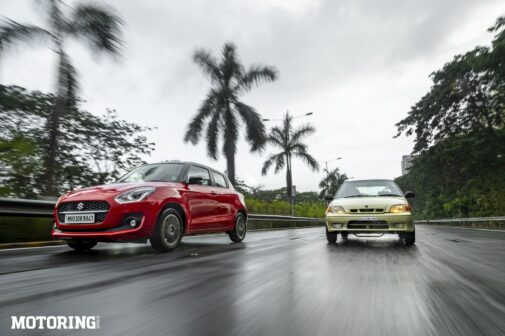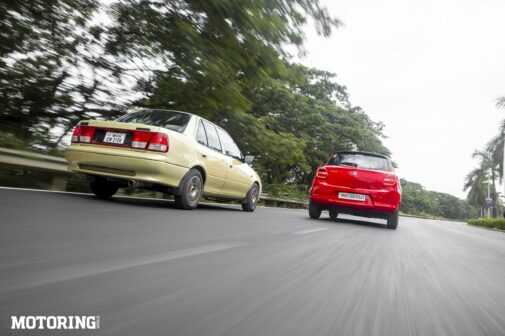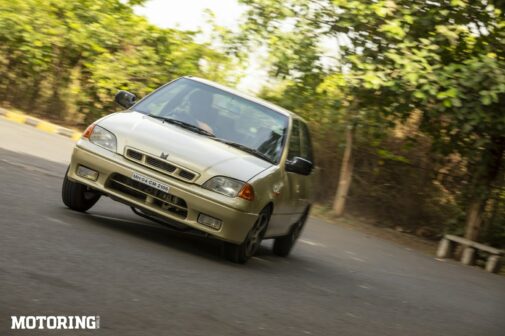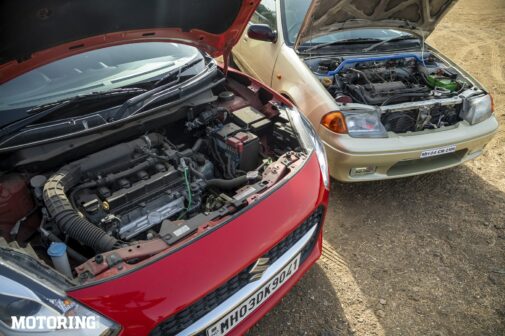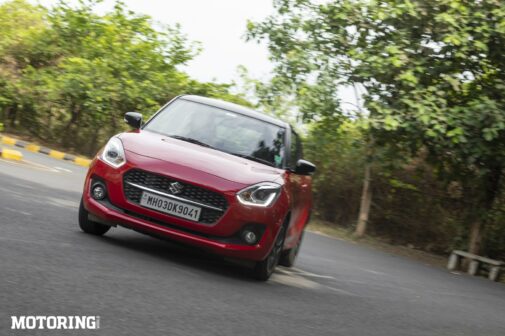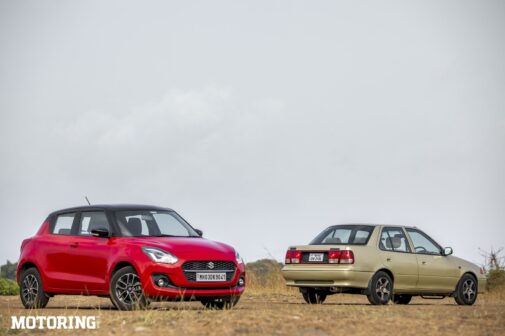When Janak told me he had finally restored his Maruti Suzuki Esteem to its former glory (and maybe even made it a mite better), Kaizad, Janak, and I put our heads together to decide just how we could feature it. The Esteem has always been a car close to my heart — at the age of 13, I learned to drive in my dad’s old one — and I knew we had to do it justice. Then the little light above my head clicked — it was called the Swift in a variety of markets abroad, and we do have a Swift here now.
The Dzire may seem like the true successor to the Esteem, seeing as it’s the budget sedan in Maruti Suzuki’s current line-up, but honestly, the connection to the Swift is a better one. In those days, the Esteem was something you aspired to, and when your family bought one, it was a symbol of moving up in the world from the Ambassadors and Fiats of the time. The current Swift holds a similar position. It’s moving up from the likes of the Alto, Wagon R, and Celerio, but not so far as to be out of reach of those on a budget, such as those who can stretch for the Baleno.
Along with the connection through the nomenclature, this aspect is what connects the Esteem to the Swift, far more than the Dzire. And that’s what compelled me to bring them together. After all, how else was I supposed to find out how far the Maruti Esteem (aka the Swift) had come?
For its time, the Esteem was a statement in Japanese big-car design. It had a sleek, long bonnet with creases that lined up with the headlights, giving it a sense of width the car did not possess. That two-toothed grille and the protruding front bumper gave the Esteem a degree of sportiness that hadn’t been seen before in the early 2000s, and its streamlined body added to its (relative) athleticism. However, it’s that shapely, yet boxy boot that has always caught my eye.
It was there for practicality’s sake (the Swift in most markets was a hatchback), and to entice Indians into thinking it was a badi gaadi, but those over-large tail-lights are still eye-catching. And it did convince most of us at the time that it was a premium sedan, both in terms of its exterior design and its spacious interior, particularly the rear bench. Those plastic sliders for the AC controls, that triangular steering wheel, and the white dials in the instrument cluster were ahead of their time and triggered the nostalgia of many drops to my boarding school.
This was back in the day before the Mumbai-Pune Expressway was built, and it used to be a minimum of an eight-hour journey to get to a beautiful hilltop next to the Bhima river, on the way to Bhimashankar. I considered the Esteem that my dad drove to drop me there to be the epitome of comfort, speed, and frugality. Which, weirdly, brought me back to the present, as there was one particular aspect of how far the Esteem has come that I wanted to explore thoroughly.
Maruti’s mid-range hatchback looks quirkier than the Esteem, which is a testament to what people like in their cars. This third-gen model looks sporty, and while I am partial to the design of the first- and second-gen models, the current Swift is still something that stands out in a crowd. It’s got that boy racer aspect to it right off the bat, with its squat stance, thin headlights, large hexagonal grille, and those wraparound tail lights.
Although some may accuse the Swift’s all-black cabin of being dull, I like its simple, uncluttered look. There aren’t too many buttons, the knob for the HVAC controls gets tasteful digital displays, and even the 7-inch infotainment touchscreen below the large circular air vents looks a bit small in contrast. I also like that there are still analogue dials, and they do look old-school. Like the Esteem, there’s enough in terms of features that would make people feel they are moving up in the world when they move from a Celerio or an Alto to a Swift.
Coming back to the characteristic that I would like to look at in detail — the way they drive — I notice, for the first time, that I’m a little upset with the Swift, and I can’t exactly put my finger on why. While stopped at a signal, I look around — is it the AMT gearbox? A bit, but if you set aside its tendency to give you that peculiar head nod, it’s quick enough off the mark and in-gear.
This 1.2-litre K Series naturally aspirated engine, which features Maruti Suzuki’s fuel-saving DualJet technology, makes 89 bhp and 11.52 kgm of torque, so theoretically, it should feel quick. Considering the Swift’s 905 kg kerb weight, it should be a firecracker. I mean, this held true for the 875 kg Esteem, whose superb, free-revving 1.3-litre G13 engine produced 84 bhp and 11.22 kgm of torque and made the sedan an enthusiast’s dream. The five-speed manual’s ratios were so tall that you could hit 100 kph in a little over 12 seconds in second gear.
The Swift is quicker, but only marginally. There has been more attention paid to the reason most people would buy this car: frugality. The Swift’s idle start-stop system and the slightly restrictive nature of the engine’s power delivery will make the mileage-conscious happy, though enthusiasts will frown. However, there is hope. Like with the Esteem, there’s tons of aftermarket stuff you can do to eke out more from what has the potential to be a great naturally aspirated engine.
One dimension that has changed from the Esteem to the Swift is the darty, fun nature of both cars. Again, previous generations of the Swift did have an edge over the current one in this regard, but the Swift still has the potential to be quite fun, with the right suspension mods. Right out of the factory, the Swift and the Esteem are geared towards comfort, not fun, which is why they come under-tyred and softly sprung. It’s why I remember begging my father to get thicker tyres for our car, and it worked wonders in terms of high-speed stability. There was a corresponding (but easily manageable) drop in fuel efficiency, but I felt justified in my choice.
Scores of rally drivers will tell you just how awesome the Esteem was to drive, with the correct modifications, and it’s heartening that the Swift has similar potential, albeit one I don’t think we’ll ever see achieved. I would like to see a tuned and properly modded Swift take on the dusty stages at the Chikmagalur Rally, or scramble on the edge of cliffs through the Himalayas. That would help the Swift maintain the Esteem’s legacy. It’s too bad that it may not happen, but it’s at least good to know that the potential that the Esteem showed continues — in a reduced manner, but it’s there nonetheless.
AUTODATA
Maruti Suzuki Swift ZXI+ AMT Dual-TonePOWERTRAIN
Displacement:
Max Power:
Max Torque:
Transmission:
1197cc, I4, petrol
89 bhp@6000 rpm
11.52 kgm@4400 rpm
5AT
TYRES
F/R: 185/65 R15
DIMENSIONS
L/W/H (mm):
Wheelbase:
Ground Clearance:
Kerb Weight:
Fuel Capacity:
3845/1735/1530
2450 mm
NA
905 kg
37 litres
PRICE
Rs 8.85 lakh (ex-showroom, Delhi)
AUTODATA
Maruti Suzuki EsteemPOWERTRAIN
Displacement:
Max Power:
Max Torque:
Transmission:
1298cc, I4, petrol
84 bhp@6000 rpm
11.22 kgm@4500 rpm
5MT
TYRES
F/R: 155/65 R13
DIMENSIONS
L/W/H (mm):
Wheelbase:
Ground Clearance:
Kerb Weight:
Fuel Capacity:
4095/1575/1395
2365 mm
NA
875 kg
40 litres
PRICE
NA





